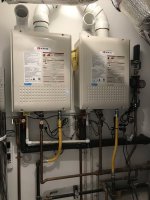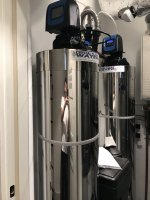Thinking about it a bit, I'm left wondering just how much math the "...plumbing engineer ..." applied to the actual problem? (That is, as opposed to adding up the billable hours or the component costs of the non-solution "solution" that was proposed. )
This isn't rocket science, but it's more than just drawing pretty pictures of plumbing layouts. Hopefully any reviewers will scrutinize the plumbing diameters against the equivalent lengths and anticipated flows. If they get the BTU/hour budget right, it makes the rest of it a bit suspect.
This isn't rocket science, but it's more than just drawing pretty pictures of plumbing layouts. Hopefully any reviewers will scrutinize the plumbing diameters against the equivalent lengths and anticipated flows. If they get the BTU/hour budget right, it makes the rest of it a bit suspect.


